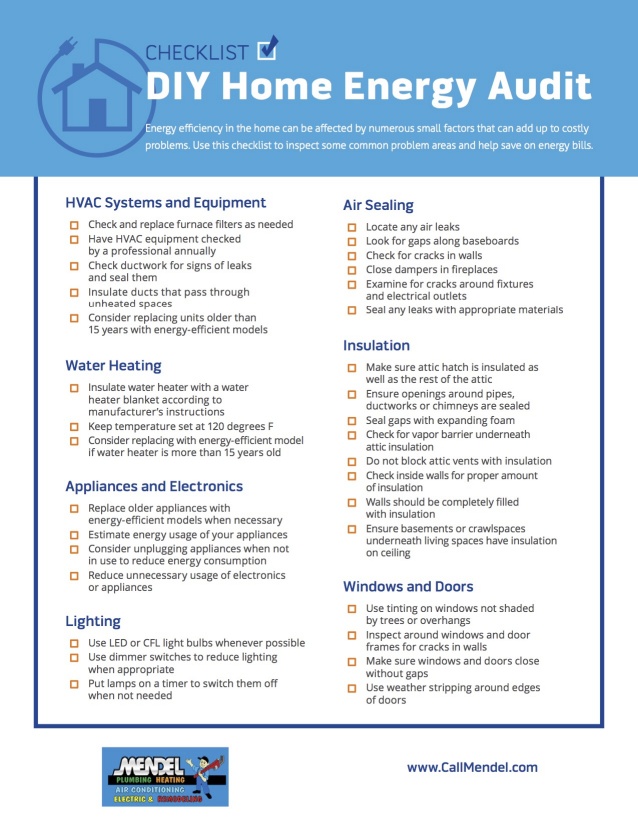Is your monthly utility bill excessively high? The likely culprits are air leaks, drafts and “energy vampires” — devices such as computers and game consoles that sap power even when they aren’t in use. The average American spends $2,000 on energy each year, with an estimated $200 to $400 of that going to waste due to drafts, air leaks and outdated HVAC systems.

Periodically checking your home’s energy efficiency can help ensure that you’re not wasting power. Hiring a professional auditor can be expensive, but in just an afternoon you can conduct your own home energy inspection to pinpoint any problem areas. Taking a DIY approach saves you money, allows you to develop new skills and even provides an opportunity for family bonding.
Ready to learn how to spot and address some of the worst energy offenders in your home? Roll up your sleeves and follow this beginner’s guide to determine what’s draining your wallet.
Check your HVAC system
Your home’s heating and cooling system can account for more than 50% of your utility bill. Evaluate heating equipment annually by inspecting furnace filters and swapping in new ones as necessary. Disposable filters should be discarded and replaced every 30 to 90 days. Check ductwork for signs of leaks and seal them. Consider replacing HVAC units older than 15 years with more energy-efficient models.
Locate air leaks
Doors and windows are the main culprits of escaped indoor air, which can lower your home’s overall efficiency while raising your heating and cooling bills. Seal the air leaks around walls, floors, windows, ceilings, doors and fireplaces with spray foam, caulk or weather stripping. Homeowners can potentially save as much as 30% per year by reducing drafts in their home.
Inspect the fireplace
Check for soot buildup and cracks in the mortar between bricks. Remember to always keep your fireplace damper closed when not in use to prevent warm indoor air from escaping through the chimney.
Examine attic insulation
Note whether your attic hatch has effective weather stripping. An uninsulated hatch can suck as much treated air out of living spaces as a fireplace chimney. Determine if openings for ductwork, pipes and chimneys are sealed. If not, seal any gaps with expanding foam caulk or another permanent sealant. When sealing around chimneys, be sure to use a noncombustible sealant.
Replace old bulbs
To save money on lighting, use LED or CFL bulbs instead of old-style incandescent ones wherever possible. While they may cost slightly more than their incandescent counterparts, the long bulb life and increased energy savings make upgrading worth it in the long run. Consider putting light fixtures on a timer to switch them off when not in use.
It typically costs about $400 to have a professional auditor identify leaks and problem areas, but you can conduct a simple yet thorough home energy assessment to determine where you are wasting resources — and achieve a more sustainable home in the process. The accompanying checklist will help you get started.
Author bio: Author bio: Tom Mascari is President of Mendel Plumbing and Heating. Providing Geneva, Illinois plumbing and HVAC services since 1985, Mendel Plumbing and Heating has a reputation for expert customer service and technical performance.
